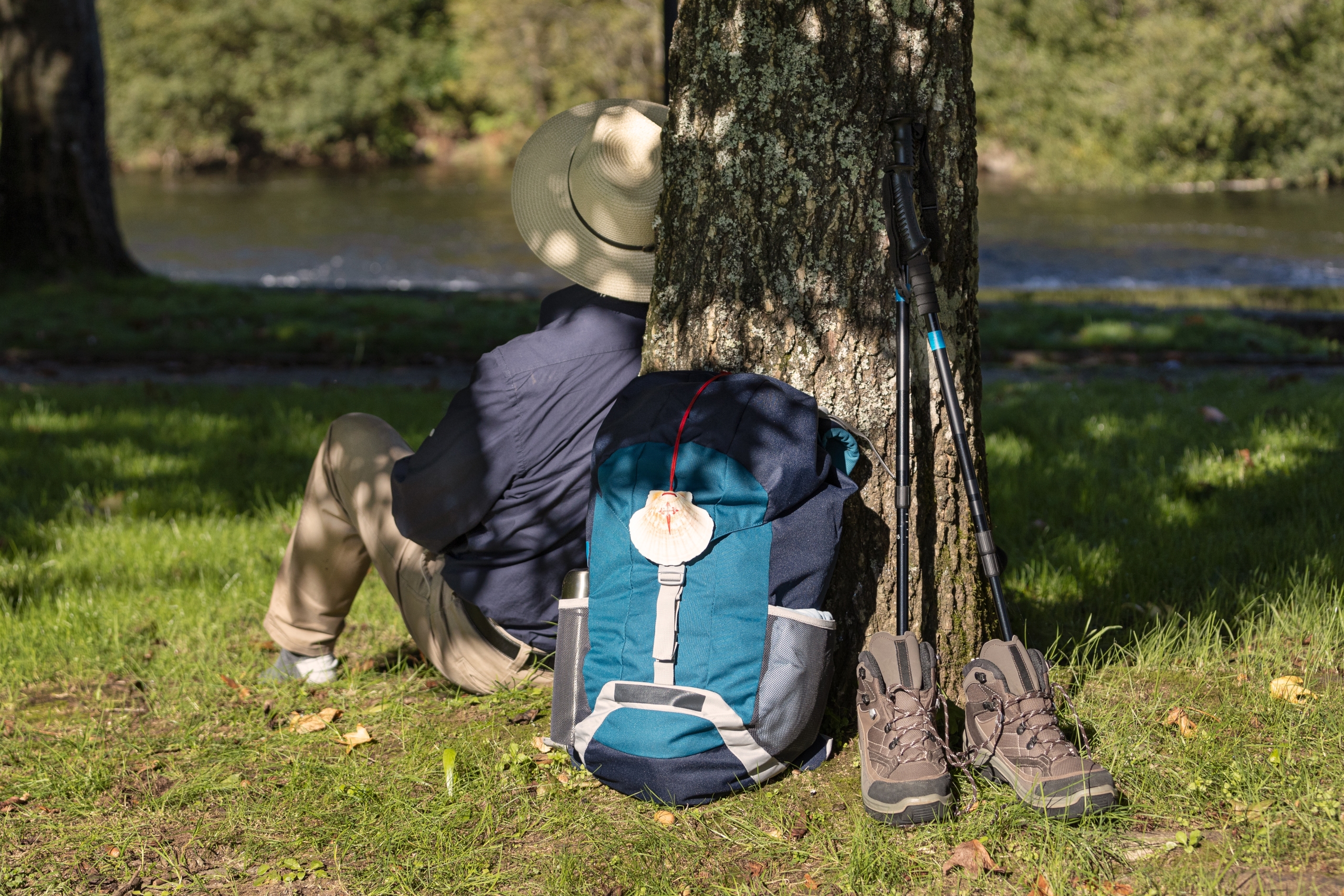“Even the sun pauses to rest at sunset.” — Japanese Proverb
In pilgrimage, every step matters—but knowing when to stop is just as crucial. Walking for days, weeks, or even months challenges both body and mind. Rest is not a luxury; it is a necessity. Without proper recovery, a pilgrimage can become exhausting; with the right balance between movement and rest, it becomes a transformative experience.
How, when, and where should one rest for optimal recovery? Insights from science, mythology, and historical traditions offer valuable guidance.
The Brain Walks While We Sleep
Many believe that rest benefits only the body, but real recovery happens in the mind. During sleep, the brain reorganizes itself. The REM phase consolidates memories and experiences, while deep sleep repairs muscles. Studies suggest that insufficient sleep impairs cognitive function and increases stress levels. (nature.com)
For a pilgrim, lack of rest can mean:
- Higher risk of injury. A fatigued brain reacts more slowly, increasing the chance of missteps or falls.
- Mental exhaustion. Without proper rest, motivation and focus decline.
- Inflammation and muscle pain. Sleep activates the lymphatic system, helping to clear toxins from the muscles.
- Quality sleep is not optional—it determines whether the journey is rewarding or draining.
The Art of Pausing Without Guilt
Modern culture glorifies endurance. Phrases like “No pain, no gain” dominate sports and work environments. Yet, elite athletes understand that rest is part of training. Roger Federer reportedly sleeps around 12 hours daily, combining nighttime sleep with naps. (tennisworldusa.org)
For pilgrims, rest is not wasted time—it is the moment when the body absorbs the effort and prepares for the next stage.
Signs that it’s time to pause:
- Unexplained irritability
- Difficulty focusing on the surroundings
- Mental fog or heaviness
- Lack of motivation
Listening to these signals can mean the difference between an enjoyable journey and a frustrating one.
Even Mythological Heroes Rested
Mythology is filled with moments of pause. Even legendary figures needed rest:
- Odysseus and Calypso’s Island: After years of struggle, Odysseus finds refuge with the nymph Calypso. Only after regaining his strength is he ready to return home.
- Heracles and the Garden of the Hesperides: Even the strongest hero of Greek mythology needed a moment of respite before his final labor.
- Buddha and the Bodhi Tree: Siddhartha attained enlightenment only after ceasing his internal struggle and finding rest under a tree.
The lesson? Rest is not failure; it is part of the journey.
Where to Rest: Choosing the Right Place Matters
Not all places are ideal for recovery. Some enhance rest, while others make it more difficult.
1. Hostel or Nature? The Pilgrim’s Dilemma
- Hostels and shelters: Provide beds and meals but can be noisy.
- Camping in nature: Offers solitude and connection with the environment but requires proper gear.
2. The Power of Sacred Places
Historically, pilgrims found refuge in monasteries and abbeys, where rest was not just physical but also contemplative.
3. Silence as Medicine
Studies suggest that quiet environments improve sleep quality. The sounds of nature—wind, water, rustling leaves—enhance relaxation.
Techniques for Optimal Recovery
Resting well involves more than just sleep; small daily habits improve recovery.
1. Take Micro-Breaks While Walking
Stopping for five minutes every two hours helps prevent muscle fatigue.
2. Stretch Before Sleeping
Light stretching exercises relieve muscle stiffness and improve circulation.
3. Eat for Better Sleep
Avoid heavy meals before bed. Foods rich in tryptophan—such as bananas and nuts—support melatonin production for better rest.
4. Breathe to Relax
Deep breathing activates the parasympathetic system, reducing stress. Try the 4-7-8 technique: inhale for 4 seconds, hold for 7, exhale for 8.
The Benefits of Rest in Pilgrimage
Proper rest offers immediate and long-term benefits:
- Greater endurance. The body adapts better to effort.
- Lower risk of injuries. Recovery reduces inflammation and strain.
- Sharper mental focus. Walking is easier with a well-rested mind.
- A richer experience. Pilgrimage is not a race—energy is needed to fully appreciate the journey.
Rest: A Pilgrim’s Best Ally
A true pilgrim is not the one who walks the most but the one who listens to their body. Knowing when to stop is wisdom, not weakness. In both movement and rest, transformation takes place.
“Sometimes, the best step forward is to pause.” — Anonymous
And the next step? It always begins after a good rest.





